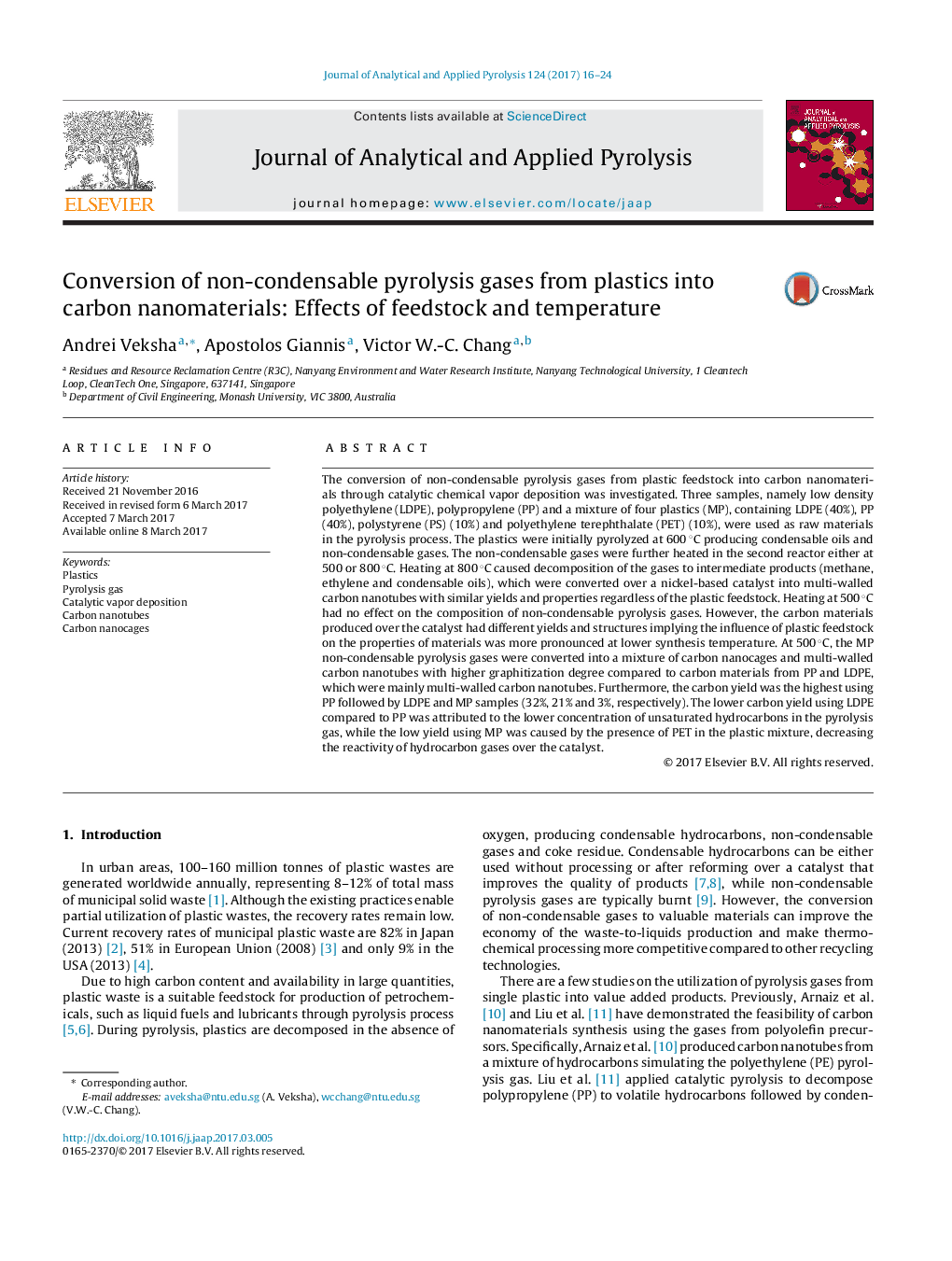| کد مقاله | کد نشریه | سال انتشار | مقاله انگلیسی | نسخه تمام متن |
|---|---|---|---|---|
| 5134566 | 1492953 | 2017 | 9 صفحه PDF | دانلود رایگان |

- Carbon nanomaterials were synthesized at 500 and 800 °C.
- Pyrolysis gas decomposed to intermediates prior to catalytic deposition at 800 °C.
- Carbon properties were influenced by feedstock at lower synthesis temperature.
- PET in plastic mixture suppressed catalytic activity at 500 °C.
The conversion of non-condensable pyrolysis gases from plastic feedstock into carbon nanomaterials through catalytic chemical vapor deposition was investigated. Three samples, namely low density polyethylene (LDPE), polypropylene (PP) and a mixture of four plastics (MP), containing LDPE (40%), PP (40%), polystyrene (PS) (10%) and polyethylene terephthalate (PET) (10%), were used as raw materials in the pyrolysis process. The plastics were initially pyrolyzed at 600 °C producing condensable oils and non-condensable gases. The non-condensable gases were further heated in the second reactor either at 500 or 800 °C. Heating at 800 °C caused decomposition of the gases to intermediate products (methane, ethylene and condensable oils), which were converted over a nickel-based catalyst into multi-walled carbon nanotubes with similar yields and properties regardless of the plastic feedstock. Heating at 500 °C had no effect on the composition of non-condensable pyrolysis gases. However, the carbon materials produced over the catalyst had different yields and structures implying the influence of plastic feedstock on the properties of materials was more pronounced at lower synthesis temperature. At 500 °C, the MP non-condensable pyrolysis gases were converted into a mixture of carbon nanocages and multi-walled carbon nanotubes with higher graphitization degree compared to carbon materials from PP and LDPE, which were mainly multi-walled carbon nanotubes. Furthermore, the carbon yield was the highest using PP followed by LDPE and MP samples (32%, 21% and 3%, respectively). The lower carbon yield using LDPE compared to PP was attributed to the lower concentration of unsaturated hydrocarbons in the pyrolysis gas, while the low yield using MP was caused by the presence of PET in the plastic mixture, decreasing the reactivity of hydrocarbon gases over the catalyst.
Journal: Journal of Analytical and Applied Pyrolysis - Volume 124, March 2017, Pages 16-24